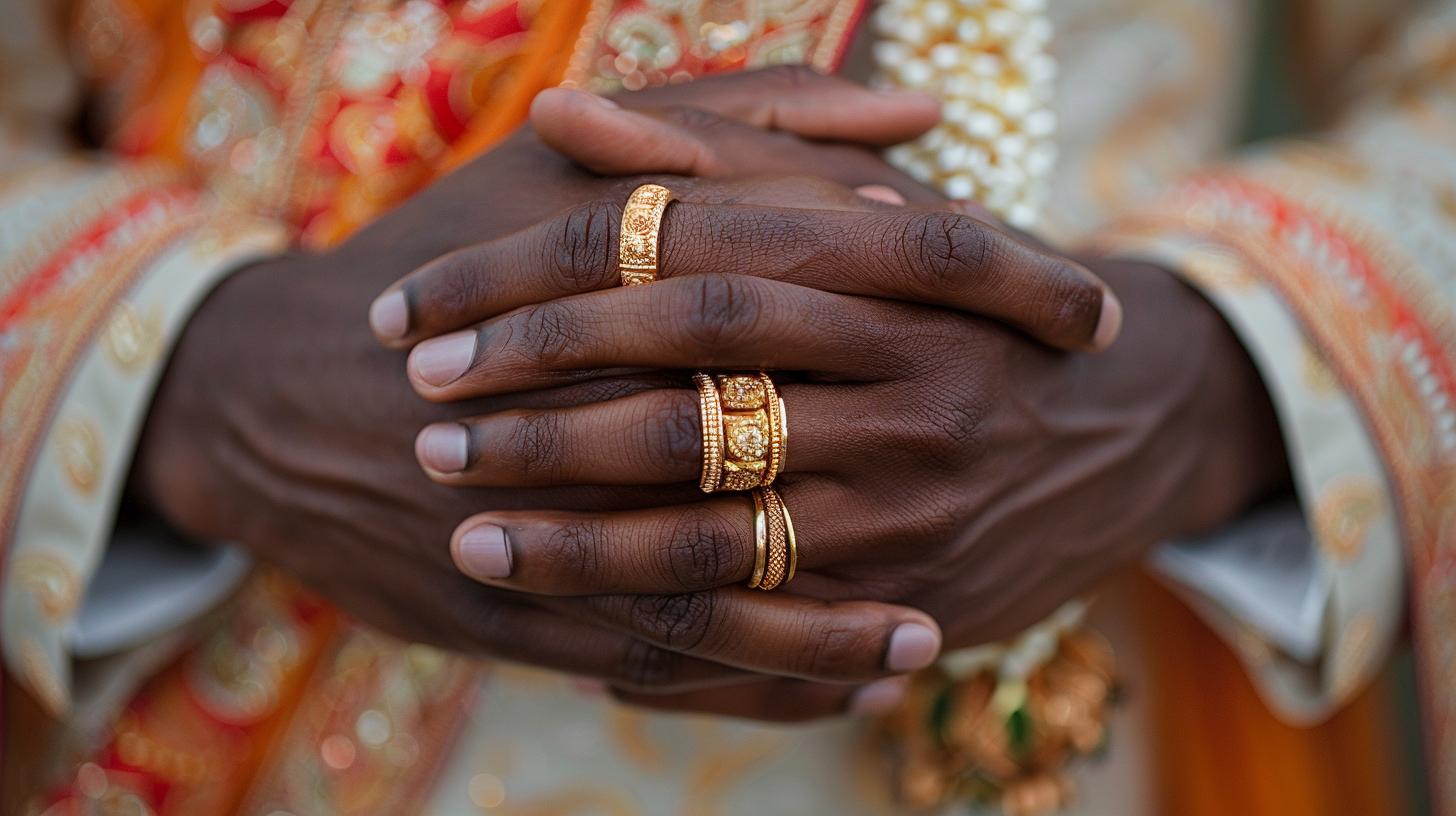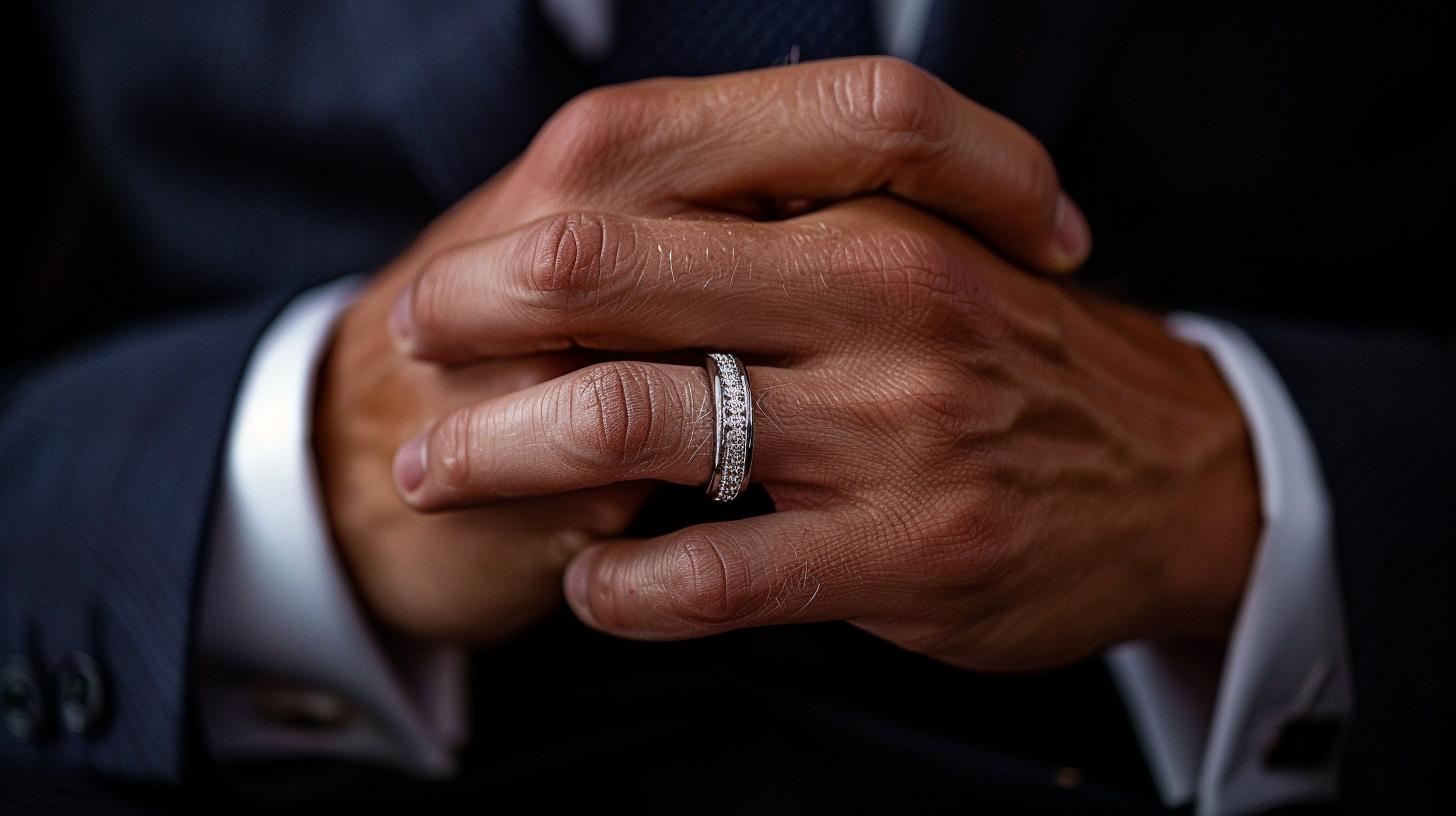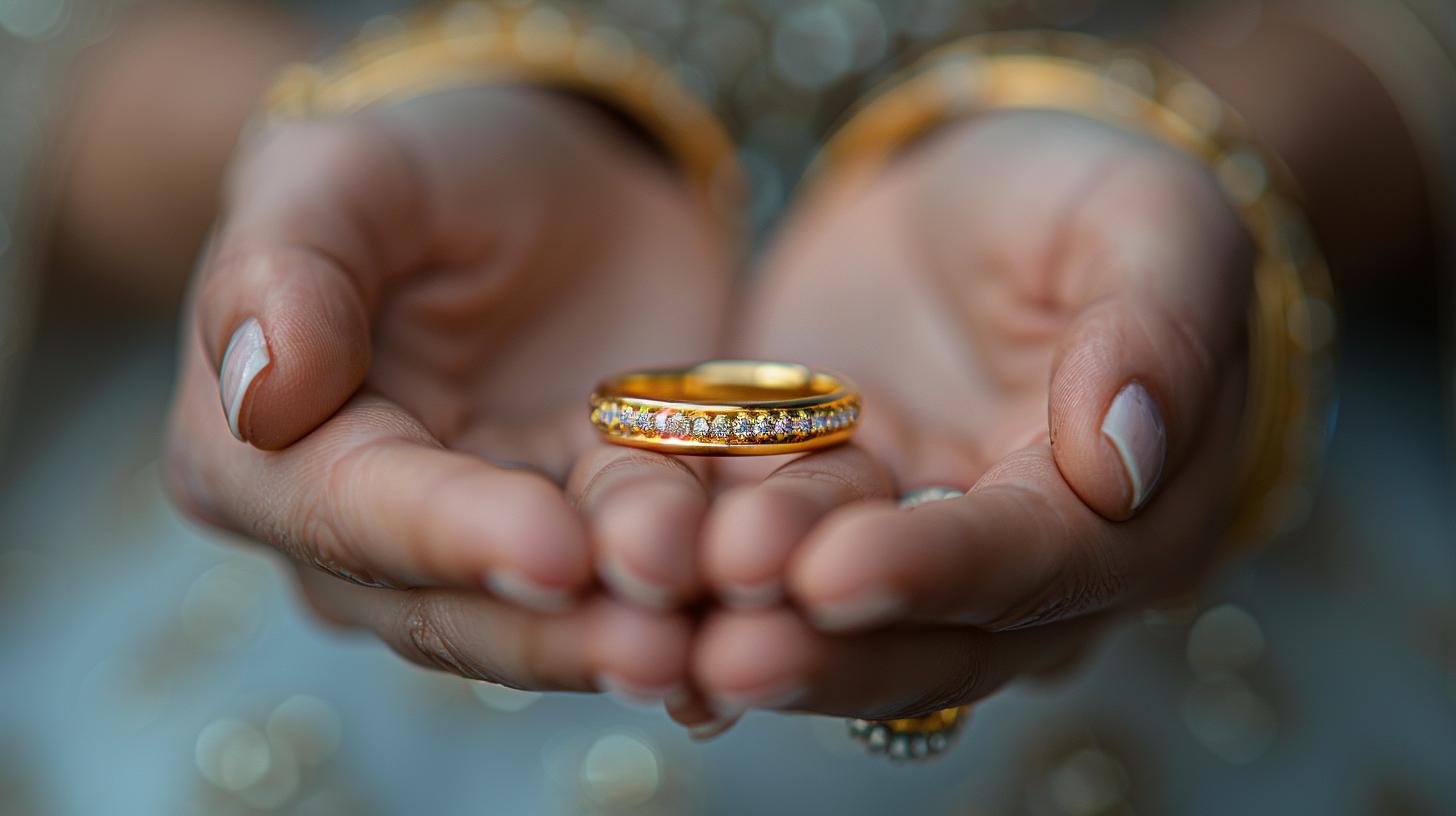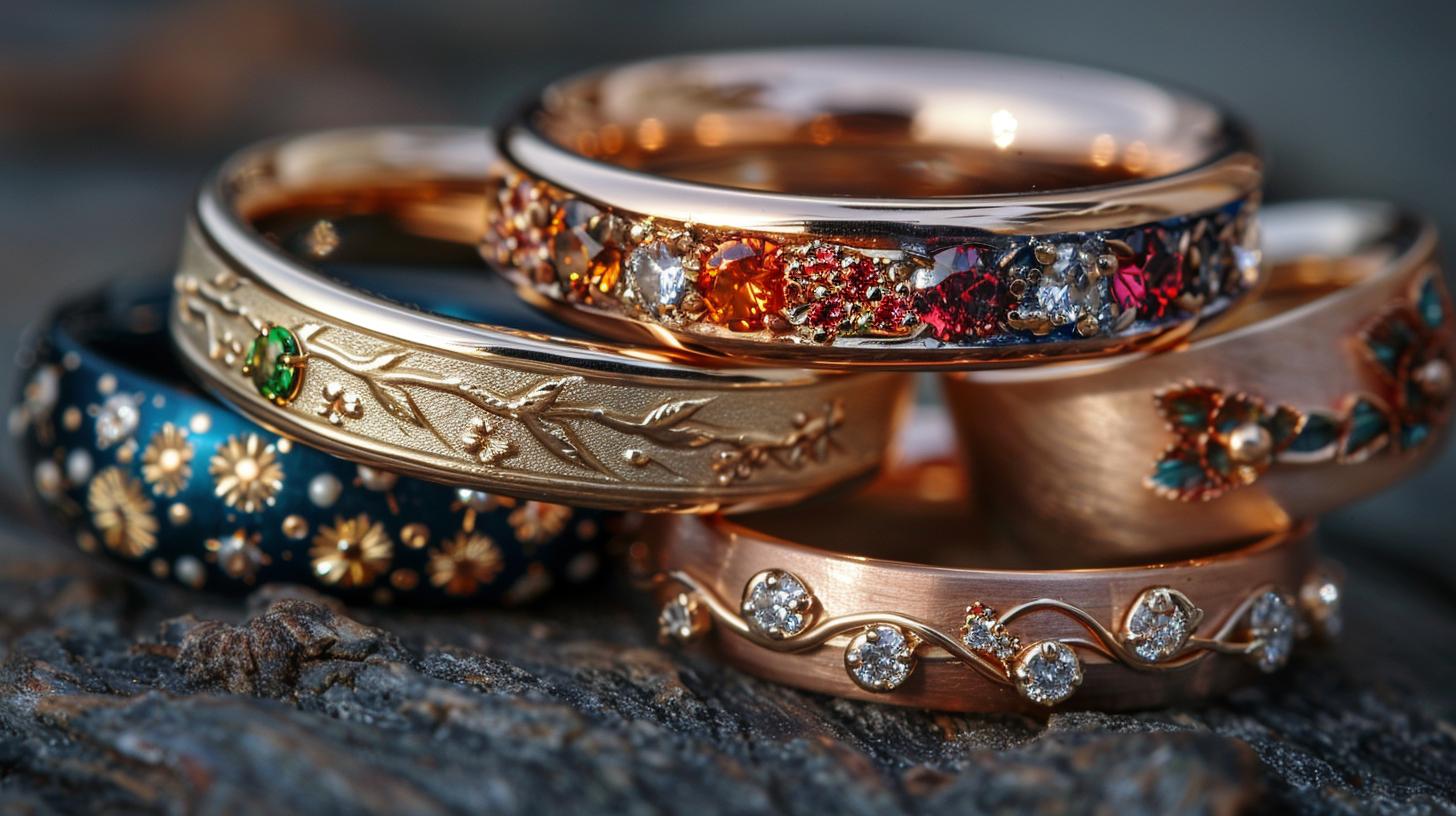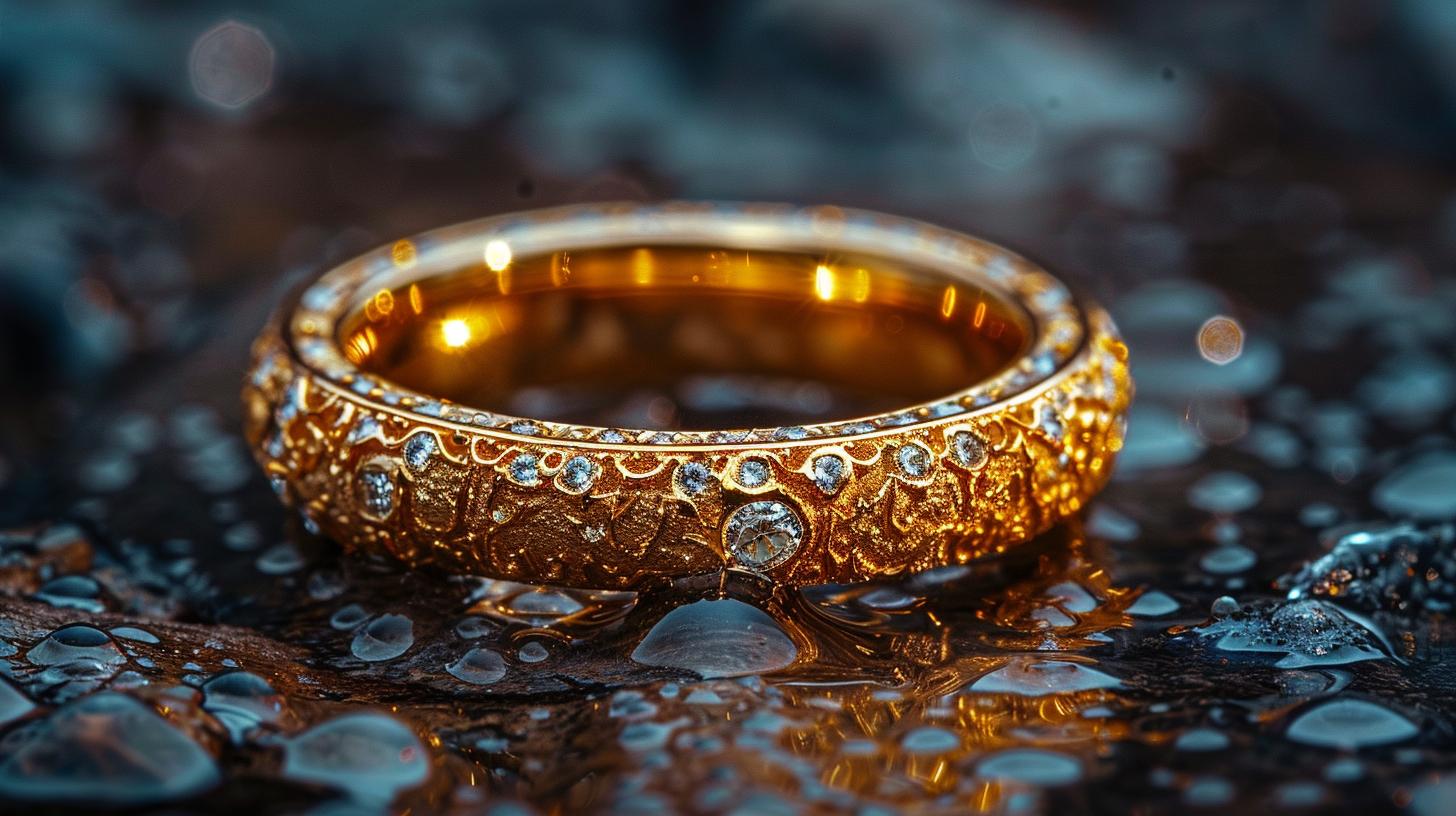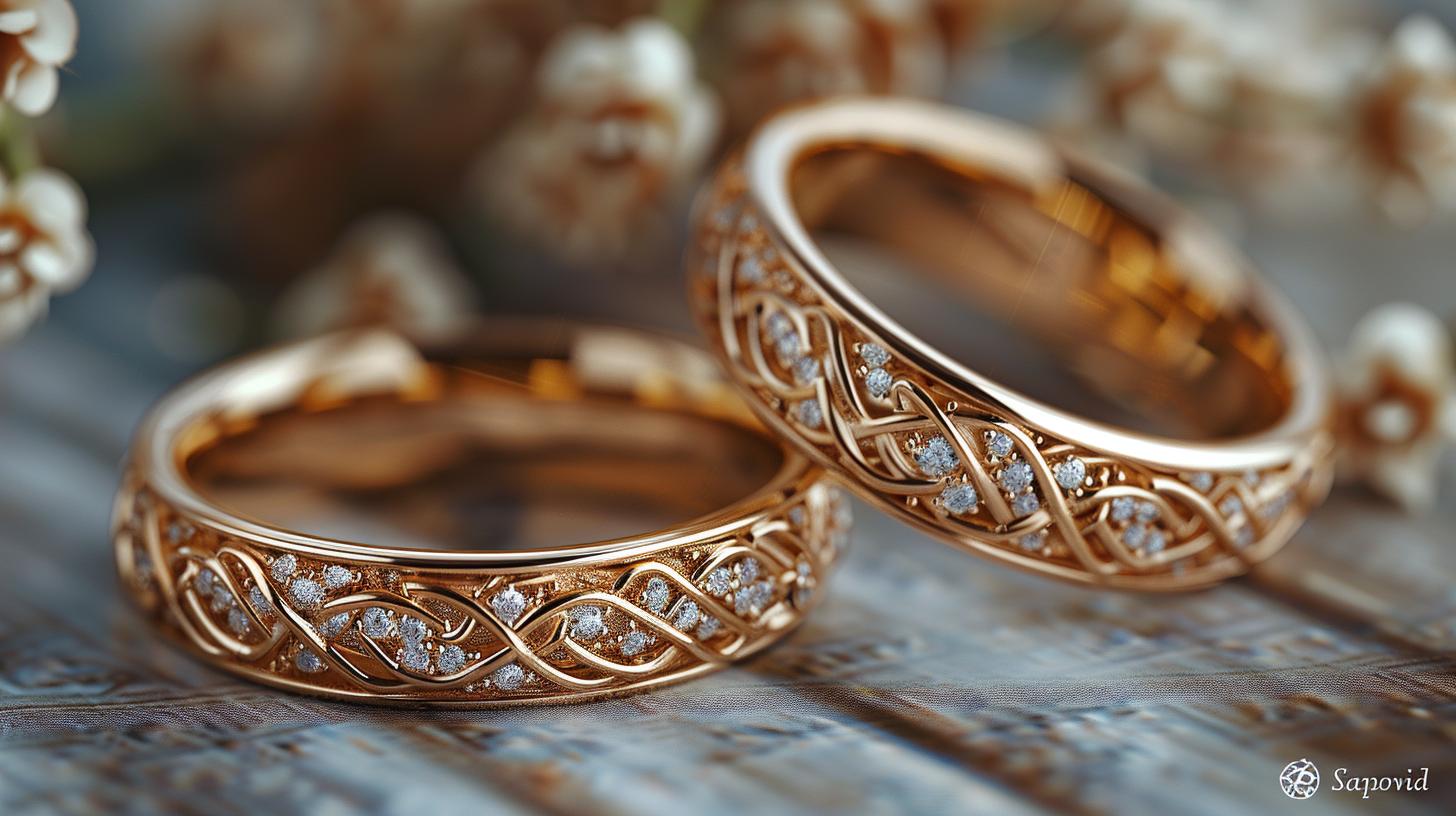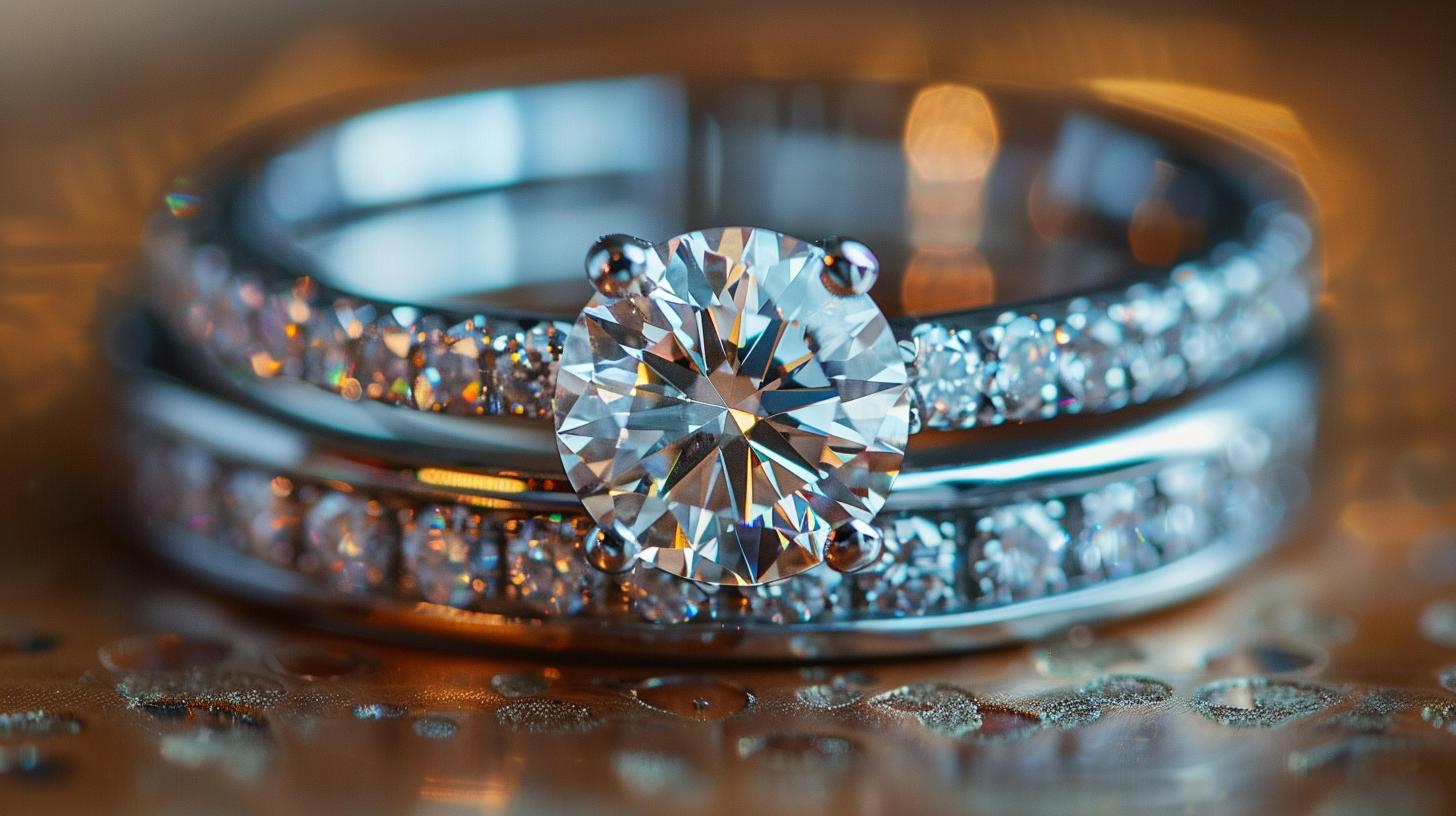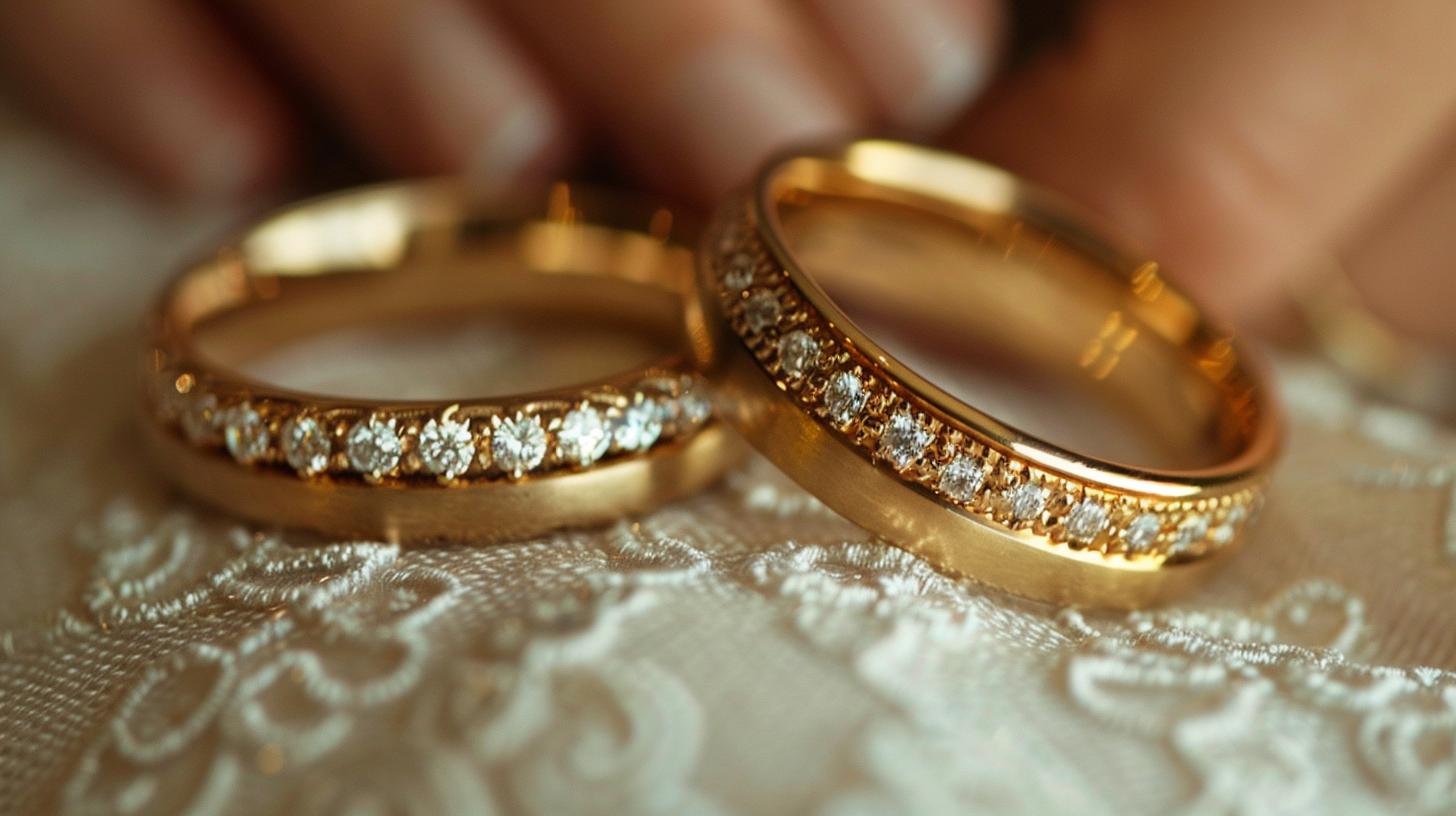On What Hand Does A Man Wear His Wedding Ring On: A Guide for Men
In various cultures and traditions, the question of where does a man wear his wedding ring can vary. Most Western countries, like the USA and the United Kingdom, follow the tradition of wearing the wedding ring on the left hand, specifically on the ring finger of the left hand.
This is often seen as a symbol of love and commitment, representing a man’s devotion to his partner during their journey together. The traditional placement on the left hand has been a point of fascination, leading many to wonder which finger does a man wear his wedding ring on and which hand does a man wear his wedding ring altogether.
For some people, the finger that holds the wedding ring signifies the most important promise made during the wedding ceremony.
In fact, the engagement ring is often worn on the fourth finger, which has been a cherished tradition for centuries.
On wedding day, this ritual enhances the significance of your ring and the promises exchanged. However, some men choose to wear it on his right hand for cultural, personal, or religious reasons, reflecting their commitment and love to their partner.
This choice often leads to questions such as what hand should a man wear a ring? In many cultures, the ring finger holds significant meaning, as it is believed to be directly connected to the heart through the vena amoris.
Thus, the hand that a man chooses to wear his wedding band can be a reflection of both personal and cultural significance.
Therefore, the decision of which finger does a man wear his wedding ring on can be deeply intertwined with cultural beliefs and personal values.
In essence, men wear rings in which hand may depend on various factors, including tradition and personal preference. Just like women, men wear their engagement rings and wedding rings with pride, reinforcing their commitment.
The engagement and wedding rings have distinct meanings, yet both symbolize eternal love and the journey shared by couples. Some men wear rings just like their partners, creating a unified look that celebrates their bond.
In fact, mens wedding rings are often designed to be both stylish and meaningful, reflecting the couple’s shared journey.
Different Traditions and Cultures
In the realm of wedding traditions and cultures, the placement of a man’s wedding ring holds special significance. From Western practices to non-Western approaches, the wearing of wedding rings offers a window into the values and customs of diverse societies.
For example, in Eastern Orthodox traditions, the left ring finger is often where the wedding ring is placed, symbolizing the sacred union between brides and grooms. In these traditions, many couples honor their religious beliefs, showcasing the importance of their commitment to each other.
In fact, traditionally wedding rings have been exchanged as tokens of love between partners.
This commitment is further emphasized by the lifetime warranty that many couples expect from their chosen rings.
Western Wedding Ring Tradition
In Western cultures like the United States and Great Britain, the tradition of wearing a wedding ring on a specific hand dates back centuries.
This practice symbolizes the bond between partners and is deeply rooted in romantic symbolism.
Most often, men wear their rings on the left ring finger, which is commonly accepted as the traditional place to honor their commitment. It is a demonstration of love that many brides and grooms cherish throughout their lifetime.
The question of what finger does a man wear his wedding ring on is thus answered with the left hand in most Western cultures.
Many couples also choose to wear engagement rings, which are often placed on the fourth finger before the wedding day.
Just like women, many men wear engagement rings, making it a more inclusive tradition. For instance, in British culture, this tradition is particularly strong, and you can read more about it here. It is interesting to note that men wear rings on their left hand to symbolize their love and devotion, while others may opt for unique designs such as tungsten rings, which are gaining popularity for their durability and aesthetic appeal.
The perfect ring can signify a couple’s love story and be a cherished reminder of their commitment.
The choice of ring can also reflect personal style and commitment, as many couples look for options that resonate with their values.
As they get married, the significance of the wedding ring on the left ring finger becomes a cherished part of their journey, symbolizing your commitment to one another. Many couples find that the more they learn about wedding traditions, the more meaningful their choices become, especially as they prepare for their wedding ceremony.
This moment and the rings they wear will remain with them, a testament to their love and promise.
Non-Western Approaches
Non-Western societies display a fascinating array of customs when it comes to the placement of wedding rings. From countries like Russia and India to traditions in Greece and Poland, the variations in ring-wearing etiquette offer insight into the rich tapestry of global marital customs.
In many Eastern European cultures, for instance, men wear rings on their right hand, highlighting the importance of personal and cultural identity. This practice is a testament to how love is expressed differently across cultures, and it is not surprising that such diversity exists.
The question of what are the reasons behind such customs often leads to intriguing discussions among couples.
In fact, many countries have their own unique customs regarding the question of which hand man wears wedding ring and the meaning behind it, showcasing that love the world over takes many forms.
Through the centuries, the choices made regarding wedding bands have evolved, yet the core essence of love and commitment remains unchanged.
Reasons for Wearing Wedding Rings on the Right Hand
When it comes to wearing wedding rings on the right hand, there are various reasons that individuals may choose to do so.
Many brides and grooms find that the decision of which hand to use is influenced by the beliefs and customs of their families, as well as their own personal preferences. This choice also raises the question of what hand do men wear rings, with many opting for the right hand as a personal statement of their love.
Cultural Differences
In some cultures, wearing the wedding ring on the right hand may hold special significance or be a common tradition. For example, in Eastern Orthodox traditions, grooms may wear their rings on the right hand during religious ceremonies.
This highlights how traditions are maintained and passed down through generations, often evolving to include personal choices.
It can serve as a unique and personal way to express their love and devotion.
In this context, many men and women choose to wear colored stone rings that represent their individuality and the bond they share, showcasing that love transcends traditional norms. This can also include the choice of wedding rings that are designed to reflect your wedding band and the significance of your commitment.
The engagement and wedding rings are often worn together, symbolizing the unity and love that couples share.
Considerations for Left-Handed Individuals
Left-handed individuals may opt to wear their wedding ring on the right hand to prevent unnecessary wear and tear. By wearing the ring on the less dominant hand, they can protect it from potential damage in their daily activities.
This consideration is especially important for those wearing more intricate or delicate rings. Thus, the choice of which hand to wear a wedding ring on can also be a practical one, reflecting both lifestyle and personal identity.
In some cases, left-handers may even choose a more complex answer when asked about their choice, often leading to intriguing discussions about cultural practices and personal preferences. Ultimately, whether you wear your wedding ring on your right or left hand, the significance of the ring remains a symbol of love that transcends time.
Religious Influences on Wedding Ring Placement
When it comes to the placement of wedding rings, religious beliefs play a significant role in influencing traditions and practices. Different faiths and denominations have varying customs and interpretations regarding the significance of wearing wedding rings.
In many cultures, the ring finger of the left hand is associated with love and commitment, often thought of as a link between the heart and the soul. This is particularly true in traditions where the second finger from the left hand is chosen for its symbolic connection to love and fidelity.
Some cultures have specific rituals that highlight the importance of this finger, ensuring that the commitment is recognized and celebrated.
Orthodoxy and Tradition
- Orthodox traditions often dictate specific guidelines for the wearing of wedding rings, emphasizing the symbolic nature of the act as a representation of unity and commitment. In Eastern Orthodox weddings, the wedding rings are exchanged in a sacred ceremony, highlighting the importance of this ritual.
The rings are typically placed on the second finger from the left hand, symbolizing the connection of love. This tradition underscores the idea that the left for many signifies a closer link to the heart.
- In some Orthodox ceremonies, the exchange of rings is a sacred ritual symbolizing the union of two individuals in marriage.
This belief that the ring finger symbolizes the heart is shared across various cultures, reinforcing the universal nature of love. The act of wearing the wedding ring serves as a constant reminder of the commitment that couples have made to each other, ensuring that her heart there is always held close.
Couples often feel that wearing their rings not only represents their commitment but also their connection to each other and their faith.
Variances in Countries
- Across different countries with diverse religious backgrounds, the customs surrounding the placement of wedding rings can vary significantly. In Eastern European countries, it is common for men to wear their rings on their right hand, reflecting both personal choice and cultural identity.
This practice often carries deep meanings that meant that the rings serve as a public display of their marital status, establishing a sacred bond recognized by their community.
- For example, in countries like Greece and Russia, there is a strong tradition of wearing wedding rings on the right hand, influenced by religious practices and cultural norms.
This choice serves as a testament to the enduring traditions that many couples honor, often under the watchful eye of the sun, which has historically been a symbol of light and love.
The left hand is sometimes viewed as a more private space, while the right hand serves as a visible reminder of their vows.
- These variations highlight the intersection of religious beliefs and cultural traditions in shaping the way couples exchange and wear wedding rings.
The differences in practices showcase how each culture places its unique stamp on the meaning of the ring, creating a rich tapestry of traditions. The link between the cultural significance and personal expression is evident in how couples choose to celebrate their love.
Trend of Modern Wedding Bands
When it comes to modern wedding bands, there are various trends shaping the choices of couples today.
Couples are increasingly looking for ways to personalize their rings, ensuring that their love story is reflected in their choice of materials and designs.
From material choices to personalization and symbolism, modern wedding bands offer a unique way to express love and commitment.
Couples are increasingly opting for tungsten rings due to their durability and strength, as well as for their aesthetic appeal. For those interested in unique and customized designs, exploring custom wedding ring ideas can be an inspiring start.
With so many options available, couples can choose rings that truly reflect their commitment to each other and honor their own traditions, wearing the wedding ring as an everlasting symbol of their bond.
Material Choices
- Many couples are opting for alternative materials such as titanium, tungsten, or even wood for their wedding bands. This choice reflects a romantic tradition like that, where unique materials symbolize enduring love and commitment, echoing the deep connections that link between the hearts of partners.
The symbolism tied to these materials often adds an extra layer of meaning to the rings.
- These materials not only provide durability but also a unique and personal touch to the rings, making them special for both women and men.
The tradition back to the Tudor days was that wedding rings were worn on the left hand but has lasted for centuries as a symbol of love, often described as a sacred bond that meant that the couple is united in their journey together.
Personalization and Symbolism
- Personalized engravings, fingerprints, or even gemstones are becoming popular ways to add a personal touch to wedding bands.
This personalization is meant that when couples choose their designs, it reflects their unique journey together, a journey that is often shared under the sun, celebrating their love. Each ring tells a story, encapsulating moments that are precious to the couple.
- Symbolic elements such as infinity symbols or meaningful dates are also making their way into modern wedding band designs, which can be directly from the couple’s shared experiences, serving as a reminder of their commitment to each other.
The embedding of such symbols serves to reinforce their bond, reminding them of the promises they’ve made.
Wearing Wedding Rings
Wearing wedding rings has become an ingrained practice in many cultures that finger traditionally, with the left hand being the most common choice. However, there are also many countries where men wear their wedding rings on their right hand.
This question of what hand do men wear wedding rings can vary based on personal preference and cultural background.
In the eastern orthodox tradition, it is common for both women and men to wear wedding rings on the right hand, which symbolizes their commitment.
The tradition like that has lasted for centuries, and many men have wanted to embrace this custom, finding it deeply meaningful. In fact, the eastern orthodox tradition may also play a role in how couples choose to express their love through their wedding bands.
Rings through the ages have been associated with the vena amoris, the belief that this vein runs directly to the heart, further solidifying the significance of wearing wedding rings. This long history that varies from culture to culture also reflects how engagement rings and wedding rings wedding bands are perceived differently.
Though many men may choose to wear their rings on their dominant hand, the question what hand does a man wear his wedding ring on remains a common inquiry.
Ultimately, the choice of wearing wedding rings is deeply personal.
While some cultures that finger from the left hand, others embrace the right. Regardless of tradition, the wedding band symbolizes a promise, a commitment to love and cherish each other. Many couples enjoy the convenience of wearing their wedding rings every day, a testament to their enduring bond.
.

